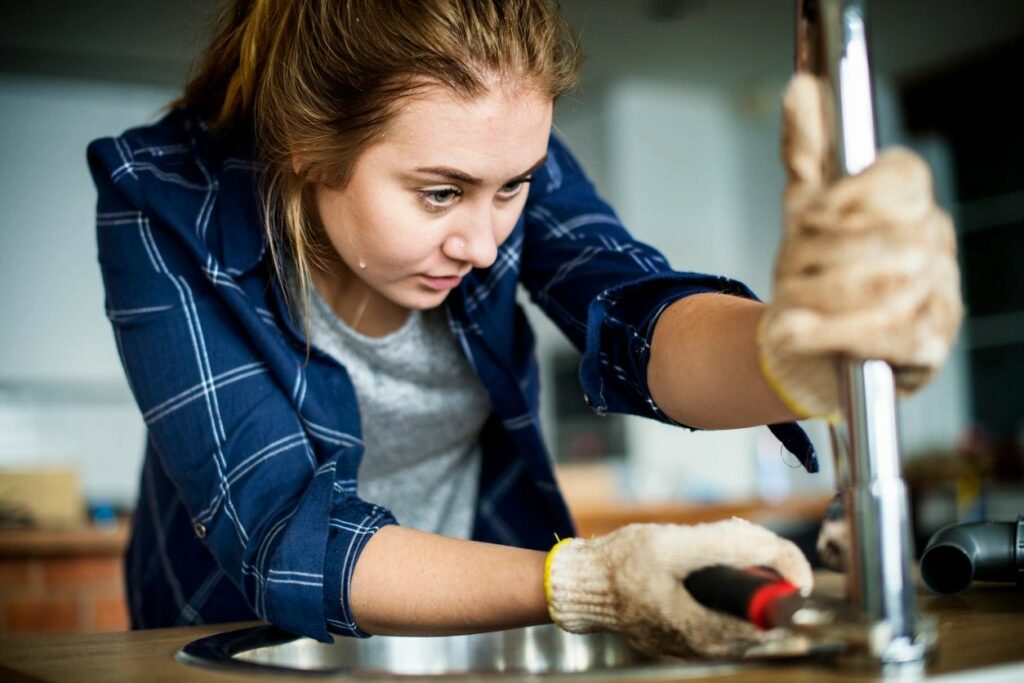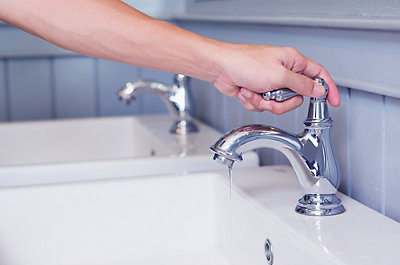My Explanations Behind Resolving a Leaking Faucet
My Explanations Behind Resolving a Leaking Faucet
Blog Article
Listed here below you can find some first-rate material relating to Should I Repair or Replace a Leaky Faucet?.

Dripping taps might feel like a minor trouble, but their effect surpasses just the nuisance of the audio. From wasting water to incurring unneeded economic prices and wellness threats, ignoring a leaking faucet can cause numerous effects. In this write-up, we'll delve into why it's vital to address this typical family concern quickly and efficiently.
Wastage of Water
Environmental Impact
Leaking taps contribute substantially to water wastage. According to the Environmental Protection Agency (EPA), a solitary faucet trickling at one drip per secondly can squander greater than 3,000 gallons of water annually. This not only pressures water resources yet additionally affects communities and wild animals dependent on them.
Financial Expenses
Increased Water Expenses
Past the environmental impact, dripping faucets can blow up water bills considerably. The accumulated wastefulness over time equates right into higher utility costs, which can have been avoided with timely repair work.
Potential Building Damages
Furthermore, prolonged trickling can cause damage to components and surface areas surrounding the tap. Water build-up can create discoloration, rust, and even architectural issues if left ignored, resulting in extra repair prices.
Health and wellness Worries
Mold And Mildew and Mold Development
The continuous visibility of wetness from a trickling faucet produces an ideal atmosphere for mold and mildew and mold growth. These fungi not only compromise indoor air high quality yet additionally pose health dangers, especially for people with respiratory conditions or allergies.
Waterborne Diseases
Stagnant water in leaking taps can end up being a breeding ground for germs and other pathogens, increasing the threat of waterborne conditions. Impurities such as Legionella germs flourish in stagnant water, possibly bring about severe diseases when ingested or breathed in.
DIY vs. Professional Fixing
Benefits and drawbacks of DIY Fixing
While some may attempt to deal with a trickling tap themselves, do it yourself repair work include their own collection of obstacles. Without appropriate knowledge and devices, do it yourself efforts can exacerbate the concern or lead to incomplete repair work, extending the issue.
Advantages of Hiring a Specialist Plumber
Working with a specialist plumber ensures that the underlying reason for the trickling faucet is addressed successfully. Plumbings have the competence and tools to diagnose and repair faucet problems successfully, conserving time and decreasing the risk of further damage.
Step-by-Step Guide to Taking Care Of a Dripping Tap
Devices Needed
Before attempting to take care of a trickling tap, gather the required tools, including an adjustable wrench, screwdrivers, substitute components (such as washing machines or cartridges), and plumber's tape.
Usual Tap Issues and Their Solutions
Recognize the sort of faucet and the details concern triggering the drip. Common troubles consist of worn-out washing machines, rusty shutoff seats, or damaged O-rings. Refer to supplier directions or on-line tutorials for detailed assistance on repair work.
Safety nets
Normal Maintenance Tips
To avoid trickling faucets, execute routine upkeep such as cleaning up aerators, checking for leakages, and changing damaged parts immediately. Furthermore, think about setting up water-saving devices or updating to more reliable components.
Significance of Prompt Repairs
Resolving dripping taps as quickly as they're observed prevents further water wastefulness and possible damages, ultimately conserving both water and money over time.
Impact on Residential Property Worth
Assumption of Well-Maintained Building
Preserving a building in good condition, including addressing upkeep problems like leaking taps, improves its viewed value and value amongst prospective buyers or renters.
Influence on Resale Worth
Properties with properly maintained plumbing components, consisting of faucets, command greater resale worths in the realty market. Addressing dripping taps can add to a positive impact during residential or commercial property inspections and arrangements.
Environmental Duty
Individual Payment to Conservation
Taking duty for repairing trickling faucets straightens with broader efforts toward water preservation and environmental sustainability. Every person's actions collectively make a significant influence on preserving priceless resources.
Lasting Living Practices
By focusing on prompt fixings and embracing water-saving habits, people contribute to lasting living methods that profit both present and future generations.
Verdict
Attending to a dripping tap goes beyond mere benefit; it's a vital action toward preserving water, lowering financial expenses, and guarding health and residential or commercial property. Whether through do it yourself repair services or expert support, acting to repair dripping faucets is a tiny yet impactful way to promote liable stewardship of resources and contribute to a much healthier, extra lasting future.
How to Fix a Leaky Faucet: Step-by-Step Repair Guide
A leaky faucet may seem like a simple annoyance, but if it's not fixed promptly, that leak could cost hundreds to potentially thousands. From water damage to mold, mildew, and high water bills, even a tiny leak can be catastrophic if left unattended. Damage like this can even affect the overall value of your home, so it's important to take the right approach for leaky faucet repair. You may need the help of a plumber in some cases, but we've got a few tips you can try on how to fix a leaky faucet before calling the pros.
Four Faucet Types
When you're learning how to fix a leaky faucet, the first step is knowing what kind of faucet you're working with! There are four common types.
Cartridge Faucets
Cartridge faucets come in one- or two-handled varieties. In one-handled cartridge faucets, hot and cold water combines in a single cartridge. In the two-handled versions, hot and cold water are controlled separately and mixed in the faucet.
Ball Faucets
Ball faucets have a single lever you push up and down to adjust the pressure and rotate to change the temperature. A slotted metal ball controls the amount of water allowed into the spout.
Compression Washer Faucets
They're the oldest type of faucet, but they're still used in many homes — especially older ones. Compression faucets have two separate handles that, when turned, raise or lower the washer that seals a water valve. This valve stops water from flowing through the faucet when it is turned off.
Disc Faucets
Disc faucets rarely need to be repaired due to their maintenance-free design. The water flow is controlled by two discs — the upper one raises and lowers against a fixed lower disc, creating a watertight seal. If your disc faucet starts leaking, you may need to replace the seals or clean residue buildup from the inlets.
Fixing a Leaky Faucet
Step 1: Turn Off the Water
Whether you're learning how to fix a leaky bathtub faucet or how to fix a leaky kitchen faucet, always turn off the water supply to your working area when you're fixing a leak. The last thing you want is a flood added to your list of things to fix.
Look for the shutoff valves below your sink or around the tub and turn them clockwise to stop the water flow. If your faucet doesn't have shutoff valves, you may need to turn off the water for the whole house. Check to make sure it's off by turning the faucet on. If nothing comes out, you're ready to start the repair.
Step 2: Take Apart the Faucet
How you disassemble your faucet depends on the type of fixture you have. You can use a flathead screwdriver to remove the caps on top of the handle or handles for cartridge and compression faucets. Inside, you should see handle screws. Unscrew these with a screwdriver to remove the handle.
Disc- and ball-style faucets will typically have an inlet screw near the handle, and removing that will reveal the interior of the faucet.
Detach the Valve Stem
For cartridge- and compression-style faucets, you'll see the inner valve stem or cartridge once you remove the faucet handles. If you have a compression faucet, unscrew the brass valve stem. If you have a cartridge faucet, pull out the cartridge. If your cartridge has been in place for a while, it may require some tools or extra force to remove it due to mineral deposits.
Examine and Replace Parts
Once you've removed the parts, check them out to confirm what needs to be replaced. You may see corroded rubber washers, O-rings, stems, or cartridges. On a ball-style faucet, check the seats and springs for damage.
If you need to repair a leaky disc faucet, check the inlet and seals on the lower disc.
Once you determine what parts must be replaced, visit your local hardware store. Bring the damaged parts with you to ensure you can purchase the correct components to replace them.
Clean Valves and Faucet Cavity
If you've removed a stem or cartridge, you may notice mineral buildup in the faucet's threads. Use white vinegar to clean the valve seat by soaking it for a few minutes, then scrub it away with a soft toothbrush and rinse with warm water. You can also clean the interior of the faucet in the same way.
Reassemble the Faucet
Once your faucet is cleaned and the required parts have been replaced, it's time to reassemble it. Put the pieces back together and slowly turn the water supply back on. Doing this slowly is crucial because too much initial water pressure can damage the new hardware you've just installed.
https://homewarranty.firstam.com/blog/how-to-fix-leaky-faucet

I was shown that report on Why Are My Faucets Dripping (And Can I Fix It Myself)? from a buddy on a different web page. Sharing is caring. Helping others is fun. Many thanks for your time. Revisit us soon.
Report this page